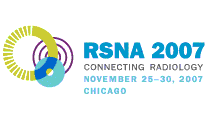
Abstract Archives of the RSNA, 2007
Steven Graham PhD, Presenter: Nothing to Disclose
Ayna Beladi Nejad BSC, Abstract Co-Author: Nothing to Disclose
Ing Berne Yeh MBBS, FRCR, Abstract Co-Author: Nothing to Disclose
Many fMRI studies that examined functional brain differences in schizophrenia are confounded by differences in intelligence score (IQ) between patients and healthy controls. Patients’ IQ is often below 100, whereas those of age and education matched controls are usually much higher. Using the Wisconsin Card Sorting Test (WCST), a standard neuropsychological test (modified for use in fMRI), we investigated brain activation for two groups of healthy subjects that differed only in their average IQ. Any differences found would have significant implications for the interpretation of previous imaging studies that examined patients whose IQ differed from those of control subjects.
28 healthy volunteers (13 males; mean age 21) were median split into two groups based on IQ scores (Group Low, mean IQ=100; Group High, mean IQ=128). Age, education, sex, and schizotypy were matched between groups. All subjects then performed the modified WCST during fMRI.
BOLD fMRI (TR=3s; FA=90; matrix=64x64; FOV=192x192; 780 volumes of 32, 3 mm slices acquired parallel to AC-PC plane) was performed on a 1.5 T Siemens Symphony MRI scanner. Motion correction, 8 mm FWHM smoothing, and Talairach transformation was performed prior to random effects general linear modeling using FIR deconvolution (BrainVoyager QX v1.8, Brain Innovation, Holland). Voxels above threshold (uncorrected p300 mm3) were considered significant.
Significant (p<0.0001) group differences were found in several regions, including dorsolateral prefrontal cortex (DLPFC) and posterior parietal cortex. In these regions, hypoactivity was found for low IQ relative to high IQ subjects.
Previous fMRI studies have noted DLPFC hypoactivity for schizophrenics (in whom IQ is lower) relative to healthy controls (with higher IQ). The present study therefore raises the possibility that DLPFC hypoactivity, which was previously ascribed to schizophrenia, may instead simply reflect reduced intellectual function in these patients.
Caution is needed when interpreting fMRI studies with patients in whom IQ may be affected. To avoid potential confounds, stricter IQ matching is required.
Graham, S,
Nejad, A,
Yeh, I,
IQ Effects on BOLD fMRI Activation. Radiological Society of North America 2007 Scientific Assembly and Annual Meeting, November 25 - November 30, 2007 ,Chicago IL.
http://archive.rsna.org/2007/5008260.html

